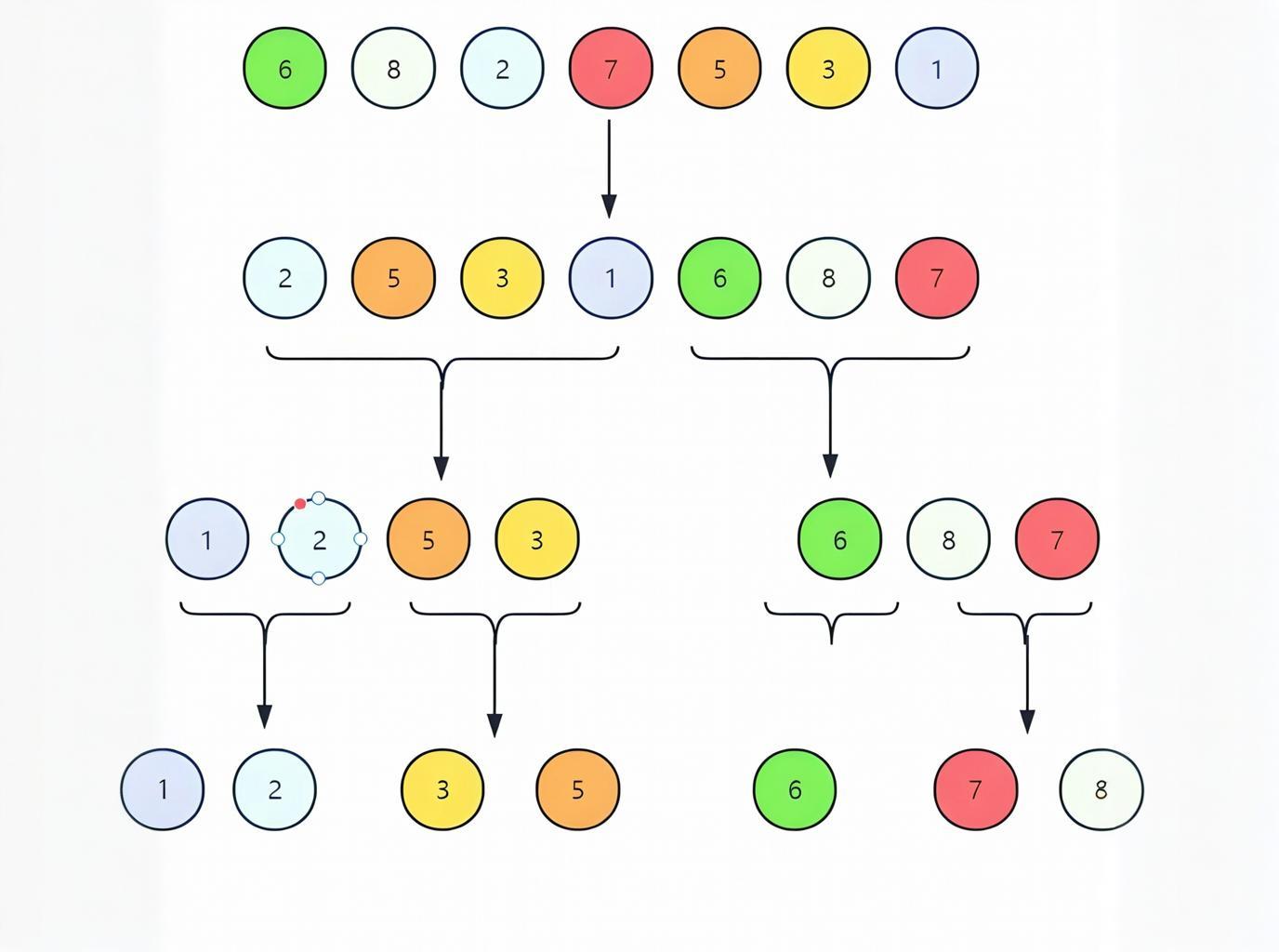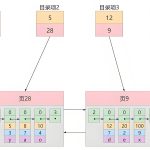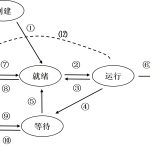Quick sort adopts the divide and conquer strategy. Its basic idea is:
- Choose a Pivot: Select an element from the array as the pivot.
- Partition: Rearrange the array so that elements smaller than the pivot are placed before it, and elements larger than the pivot are placed after it.
- Recursive Sorting: Recursively apply quick sort to the subarrays before and after the pivot.
Basic Implementations
1. Lomuto Partition Scheme
int partition(vector<int>& arr, int low, int high) {
int pivot = arr[high]; // Choose the last element as pivot
int i = low; // Boundary for elements smaller than pivot
for (int j = low; j < high; j++) {
if (arr[j] < pivot) {
swap(arr[i], arr[j]);
i++;
}
}
swap(arr[i], arr[high]);
return i;
}
void quickSort(vector<int>& arr, int low, int high) {
}
}2. Hoare Partition Scheme
int partitionHoare(vector<int>& arr, int low, int high) {
int pivot = arr[(low + high) / 2];
int i = low - 1;
int j = high + 1;
while (true) {
do { i++; } while (arr[i] < pivot);
do { j--; } while (arr[j] > pivot);
if (i >= j) return j;
swap(arr[i], arr[j]);
}
}
void quickSortHoare(vector<int>& arr, int low, int high) {
if (low < high) {
int pi = partitionHoare(arr, low, high);
quickSortHoare(arr, low, pi);
quickSortHoare(arr, pi + 1, high);
}
}Comparison of Partition Schemes
| Feature | Lomuto Partition | Hoare Partition |
| Implementation Complexity | Simpler | More complex |
| Number of Swaps | More | Fewer |
| Pivot Selection | Usually last element | Usually middle element |
| Recursive Calls | Pivot not in subarrays | Pivot may be in subarrays |
| Efficiency | Average | Usually faster |
Optimization Strategies
1. Randomized Quick Sort
int partitionRandom(vector<int>& arr, int low, int high) {
srand(time(NULL));
int random = low + rand() % (high - low);
swap(arr[random], arr[high]);
return partition(arr, low, high);
}2. Median-of-Three Method
int medianOfThree(vector<int>& arr, int low, int high) {
int mid = low + (high - low) / 2;
// Ensure arr[low] <= arr[mid] <= arr[high]
if (arr[low] > arr[mid]) swap(arr[low], arr[mid]);
if (arr[low] > arr[high]) swap(arr[low], arr[high]);
if (arr[mid] > arr[high]) swap(arr[mid], arr[high]);
return mid;
}3. Small Array Optimization
void insertionSort(vector<int>& arr, int low, int high) {
for (int i = low + 1; i <= high; i++) {
int key = arr[i];
int j = i - 1;
while (j >= low && arr[j] > key) {
arr[j + 1] = arr[j];
j--;
}
arr[j + 1] = key;
}
}
void optimizedQuickSort(vector<int>& arr, int low, int high) {
if (high - low < 16) { // Threshold can be adjusted
insertionSort(arr, low, high);
return;
}
int pi = partition(arr, low, high);
optimizedQuickSort(arr, low, pi - 1);
optimizedQuickSort(arr, pi + 1, high);
}4. Three-Way Partitioning (for handling duplicates)
void quickSort3Way(vector<int>& arr, int low, int high) {
if (high <= low) return;
int lt = low, gt = high;
int pivot = arr[low];
int i = low;
while (i <= gt) {
if (arr[i] < pivot) {
swap(arr[lt++], arr[i++]);
} else if (arr[i] > pivot) {
swap(arr[i], arr[gt--]);
} else {
i++;
}
}
quickSort3Way(arr, low, lt - 1);
quickSort3Way(arr, gt + 1, high);
}Algorithm Analysis
Time Complexity
| Scenario | Time Complexity |
| Best Case | O(n log n) |
| Average Case | O(n log n) |
| Worst Case | O(n²) |
Worst case occurs when partitioning is highly unbalanced (e.g., sorted arrays).
Space Complexity
| Scenario | Space Complexity |
| Best/Average | O(log n) |
| Worst Case | O(n) |
Space is consumed by the recursive call stack.
Stability
Quick sort is unstable because the relative order of equal elements may change during partitioning.
Practical Applications
- C++ Standard Library: std::sort() often uses an optimized version (e.g., Introsort).
- Large Data Sorting: Preferred for sorting large-scale datasets.
- Embedded Systems: More popular than merge sort in memory-constrained environments.
Common Questions
Q1: Why is quick sort faster than merge sort?
Both have O(n log n) complexity, but quick sort has smaller constant factors and is in-place (no extra space needed).
Q2: How to avoid the worst case?
- Use randomized pivot selection.
- Adopt the median-of-three method.
- Switch to heap sort for excessive recursion depth (Introsort).
Q3: When is quick sort unsuitable?
- When stable sorting is required.
- With very limited memory (risk of stack overflow from recursion).
- For nearly sorted data (insertion sort may perform better).
Summary
Quick sort is one of the most widely used sorting algorithms due to its excellent average performance. Optimizations like smart pivot selection, improved partitioning, and handling edge cases can significantly boost its efficiency. Understanding quick sort helps in writing efficient code and mastering the divide-and-conquer paradigm.


